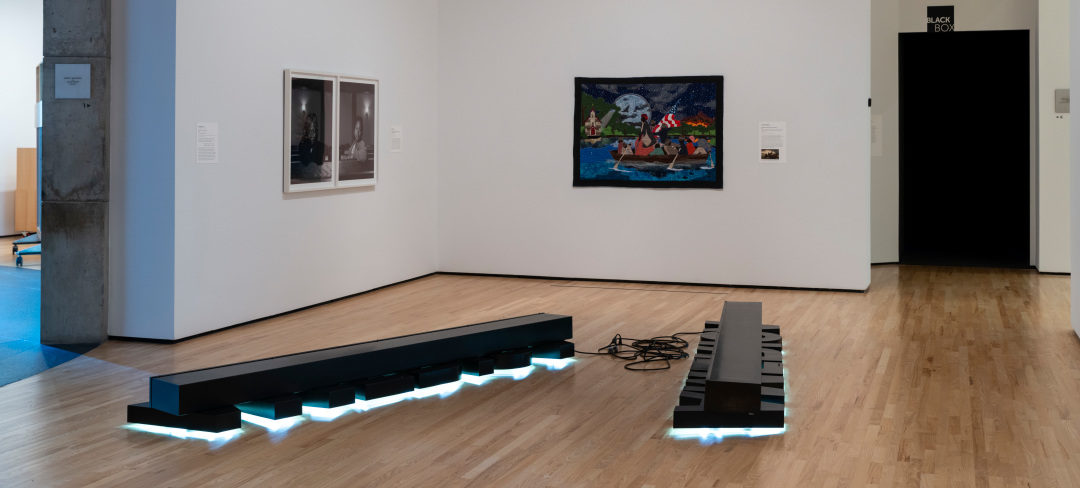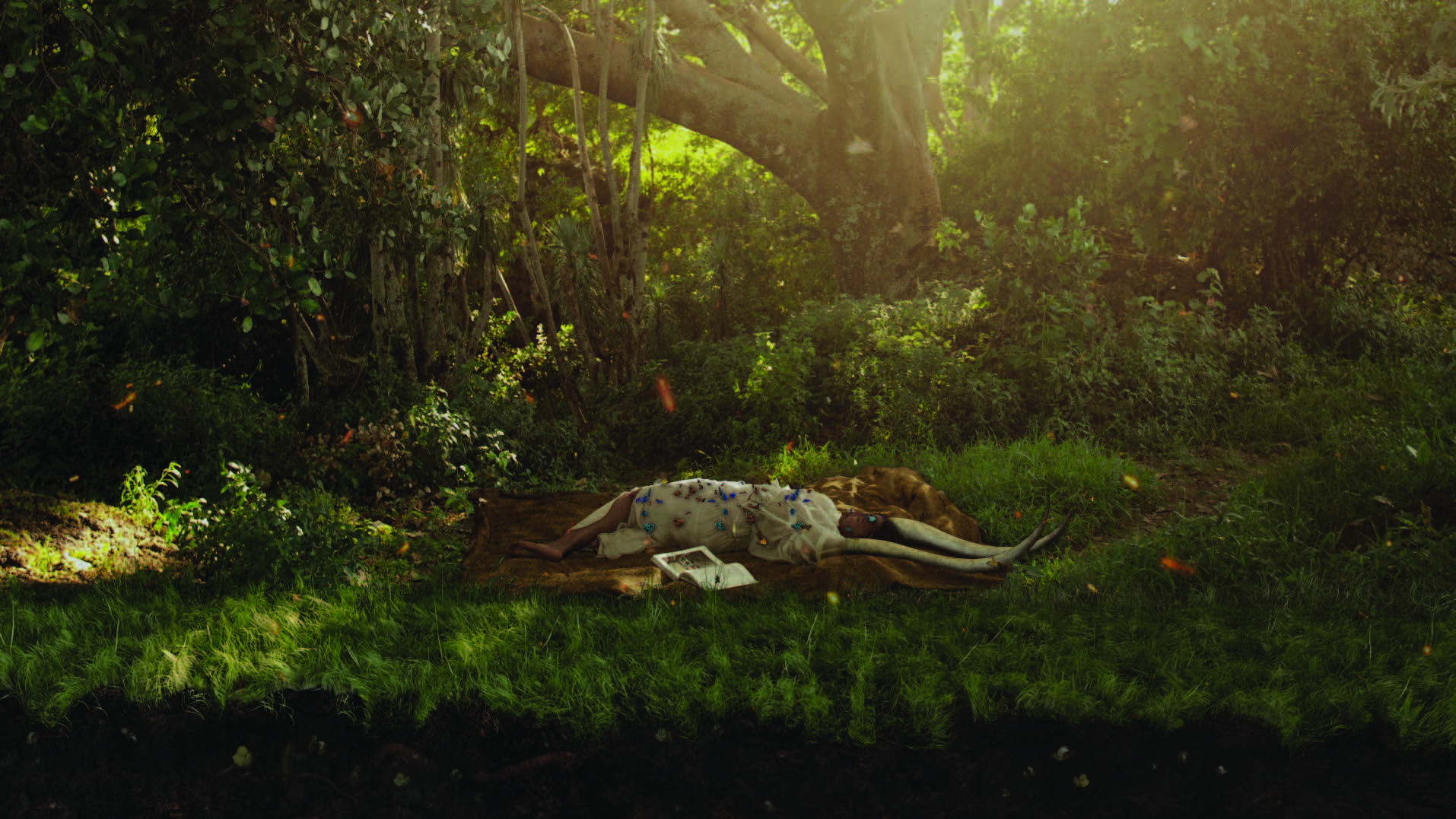
Artist, writer, and BMA Security Officer Dereck Stafford Mangus shares his encounter with students and Glenn Ligon’s Untitled (America America)
A few weeks back, a magical if fleeting moment occurred in the Museum. A few children from a school group exiting the Contemporary Wing slowed down while passing Glenn Ligon’s Untitled (America America). This conceptual sculpture consists of two light-box letter signs, the kind you find above modern storefronts. They both say “America,” but are presented face down, with their electrical cords plugged in an outlet, and their flickering white lights pulsating at random against the gallery floor.
During my shifts in the gallery as a Security Officer at the BMA, I’ve noticed that children often respond to the flickering lights of this piece. They seem to think it’s interactive, that the lights somehow respond to their movements. But though this work is not interactive, their ardent investigations—jumping and tapping their feet near it, etc.—illustrate how children are, on a very fundamental level, always trying to work things out. They might not have an understanding of conceptual art or contemporary art theory, but that doesn’t matter: they know there’s something to figure out here and they’re going to do it.
One of the kids asked me about the piece and, as I began to rattle off my two cents, the whole group stopped; several of them even sat down next to it. “What is it?” one of them asked. Many adults ask the same question about contemporary art, but they clearly don’t want to know. “My kid could have done that,” they might say, inadvertently putting down their own child.
I explained how this was a work of art by the conceptual artist Glenn Ligon, and that the two blinking shapes were really electric signs face down and thus need to be read backward. One of them quickly deciphered the first sign: “This one says ‘America.’” And before I could ask, another little girl exclaimed, “This one says ‘America’ too!” I asked them what they thought the artist was trying to say with this piece. Why would he have two blinking signs that say “America” face down on the gallery floor? Several of them raised their hands in earnest, and as I called on them, anxiously blurted out their analyses. By this point, they were all sitting and raising their hands without being prompted.
“But what do you think?” a young Socrates asked, cleverly turning the tables on me.
“Well, I’d say that whatever this thing ‘America’ is, there appears to be two of them. And whatever the overall project is, it’s damaged or unfinished. Maybe the artist is trying to say that there are two groups of Americans: black and white, rich and poor, for example. These kinds of signs would normally be hung on a wall so you could read them properly. But here the artist has placed them face down, forcing us to decipher their words backward and ponder their meanings.”
One of the children pontificated, “Um… Um… What if one of the signs was on the wall so you could read it?”
“That’s a great idea!” I responded. “By simply thinking about these kinds of things, you are doing the work of conceptual art. I bet Glenn Ligon would be proud.”
As the children got up to leave, one of their teachers mouthed “Thank you” in my direction. After the group left, one of my coworkers teased me: “Master class with Dereck Mangus.” We both laughed. Though it’s not technically part of my job—the Museum has its own Docents and Education Division—this brief interaction with the kids and Glenn Ligon really made my day. It’s moments like these that make working in a museum truly special.
Dereck Stafford Mangus is a Baltimore-based artist and writer. He currently works at the BMA, where he is regularly inspired by the permanent collections and special exhibitions. He won the Frieze Writer’s Prize 2018 for his review of Odyssey: Jack Whitten Sculpture, 1963–2017.
Glenn Ligon’s Untitled (America America) is on view in Every Day: Selections from the Collection. The exhibition closes on January 5, 2020.




